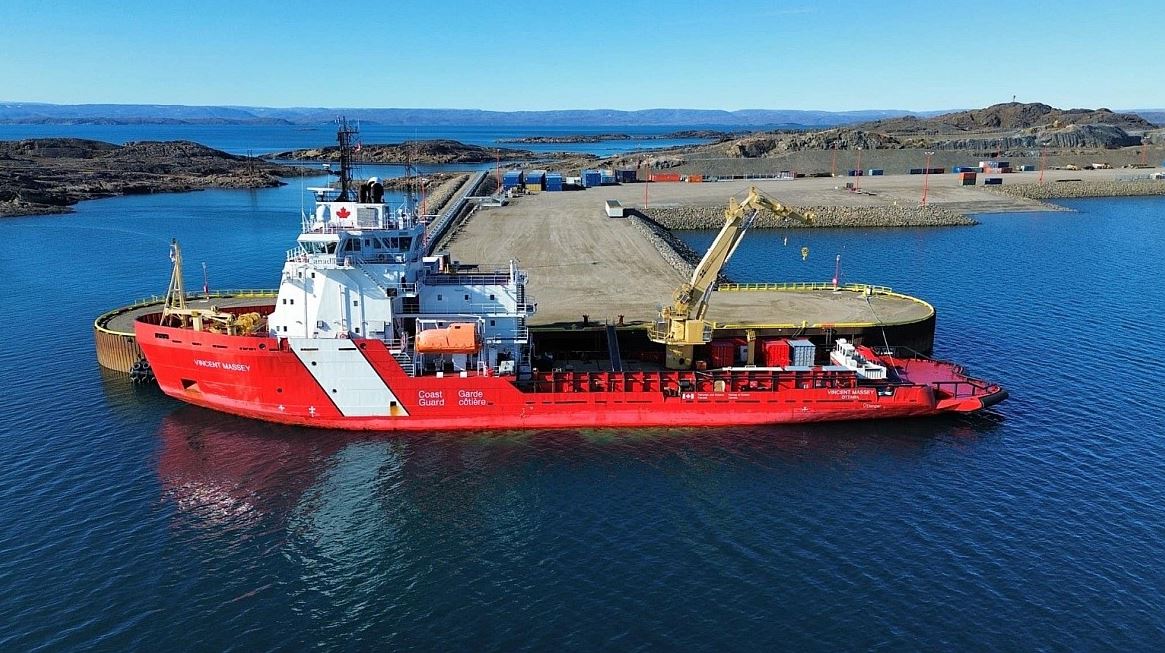 The Canadian Coast Guard successfully completed its 2024 Arctic operational season, which provides essential services to Canada’s Arctic communities, according to Canadian Coast Guard's release. This season, seven icebreakers were deployed to support community resupply and deliver key services such as icebreaking, search and rescue, maintaining aids to navigation, responding to marine pollution incidents and hazards, and supporting scientific research.
The Canadian Coast Guard successfully completed its 2024 Arctic operational season, which provides essential services to Canada’s Arctic communities, according to Canadian Coast Guard's release. This season, seven icebreakers were deployed to support community resupply and deliver key services such as icebreaking, search and rescue, maintaining aids to navigation, responding to marine pollution incidents and hazards, and supporting scientific research.
The CCGSŌĆ»Amundsen was the first vessel deployed for the season on June 14, 2024, from Quebec City, QC, and the CCGS Des Groseilliers was the last vessel to return from the Arctic on December 8, 2024. In Rankin Inlet, NU, the Arctic Marine Response Station was open from June 21 to October 22, 2024, and responded to eight search and rescue incidents. Aside from this essential service, the all-Indigenous team also performed four training exercises and patrolled over 737 nautical miles around the areas of Rankin Inlet, Chesterfield Inlet, and Whale Cove, NU.
In August, the Canadian Coast Guard welcomed the United States Coast Guard’s (USCG) District 17 Rear Admiral Megan Dean aboard the CCGS Pierre Radisson in Resolute Bay, NU, and the CCGS Amundsen in Frobisher Bay, NU. From August 24 to 26, 2024, the Canadian Coast Guard joined the United States Navy, USCG, and the Royal Danish Navy for Operation NANOOK 2024, which is a yearly maritime exercise led by the Canadian Armed Forces to enhance surveillance and collective responsiveness in the Arctic. These continued partnerships play an important role in keeping northern waters safe and reinforces Canada’s long-standing sovereignty in the North.
In collaboration with Canadian Coast Guard Auxiliary, the Canadian Coast Guard held multi-day workshops with Indigenous partners and local governments to prepare for a variety of marine emergencies, such as ensuring Arctic waters are protected in the event of a marine spill. Vessel tours were also offered to better connect with community organizations and hear important feedback from residents.
Through shared knowledge, the Canadian Coast Guard can learn how to better support Indigenous coastal communities. Due to low water levels, buoy tending vessels were limited to operational areas throughout the Mackenzie River system this season. The CCGS Dumit focused on the area from Inuvik, NT, to Kugmallit Bay/Tuktoyaktuk, NT, and the CCGS Eckaloo covered Great Slave Lake.
The Canadian Coast Guard’s Arctic operations will resume in May 2025, but it maintains a full-time, year-round presence with Arctic Region headquarters in Yellowknife, NT, and additional facilities in Hay River, NT, and Iqaluit, NU.



